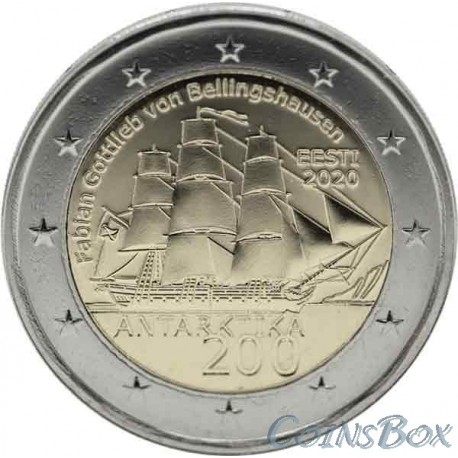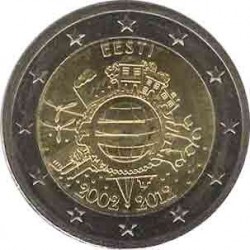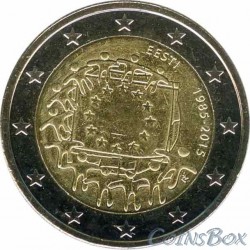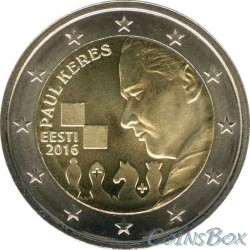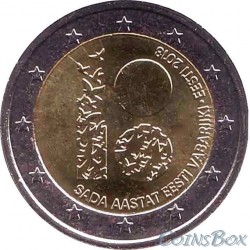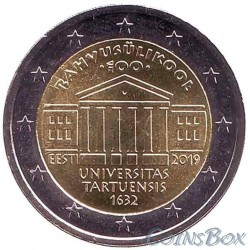No products
Product successfully added to your shopping cart
There are 0 items in your cart. There is 1 item in your cart.
Estonia
- Sets of coins
-
Coins
- Coins Russia and CIS
-
Europe
- EURO
- Austria
- England
- Belgium
- Germany
- Italy
- Spain
- Latvia
- Lithuania
- Estonia
- Luxembourg
- Portugal
- France
- Finland
- Cyprus
- Andorra
- Greece
- Netherlands
- Slovakia
- Slovenia
- Ukraine
- Belarus
- Sweden
- Poland
- Norway
- Denmark
- Ireland
- Iceland
- Switzerland
- Monaco
- Liechtenstein
- Bulgaria
- Hungary
- Moldova
- Romania
- Czech
- Vatican
- Albania
- Bosnia and Herzegovina
- Macedonia
- Malta
- San Marino
- Serbia
- Croatia
- Montenegro
- Turkey
- Kazakhstan
- Transnistria
- Scotland
- Gibraltar
- North America
- South America
- Australia and South Pacific
- Africa
- Asia
- Tokens
- Silver
- Accessories
- Sochi 2014
- Banknotes
- Sale
- Marriages and species
- Sundry
Top sellers
-

-

-

Official set of series Russian Federation. Issue 11
Official set of series "Russian Federation". Issue 11
4 650 руб -

100 RUB Sochi 2014
680 руб -

-

-

10 kopeck 2015 MMD
7 руб -

-

1 Dollar First Patent 2018
250 руб -

Official set of series Russian Federation. Issue 12
Official set of series "Russian Federation". Issue 11
5 350 руб
No supplier
Viewed products
Estonia 2 euros 2020 200 years since the discovery of Antarctica
Data sheet
| Depth | 2,2 |
| Weight | 8,5 |
| Diameter (mm) | 25,75 |
| Mintage | 750 |
| Material | bimetal |
| Edge of the coin (milling) | combined |
| Series | Outstanding events and people |
| Country | Estonia |
| Release date | 2020 |
| Quality | UNC |
More info
Estonia 2 euros 2020. 200 years since the discovery of Antarctica.
Reverse: The map of Europe is located on the right side. The background of the map shows six vertical lines. There are 12 stars at the ends of these lines. To the left of the card is a numerical denomination. On the map itself is a horizontal inscription “EURO”.
Obverse: In the center of the inner circle is the sloop "East". Above, the name of the discoverer of Antarctica, Fabian Gottlieb von Bellingshausen (Gottlieb Benjamin von Bellingshausen), is engraved in a semicircle on the edge of the inner disk, on the right is the name of the issuer state and year of issue is EESTI 2020, and below is ANTARKTIKA 200. On the outer ring are twelve stars of the European Union.
Release Date: 1/28/2020 g
The opening connection with Estonia is the Baltic-German sailor Fabian Gottlieb Benjamin von Bellingshausen, who was born on Saaremaa, the largest island in Estonia, one of the first to discover Antarctica and document this event, which is clearly reflected in the inscription represented by a coin, the main motive of which is sailing the ship of that time.
Back in the 16th century, mariners began to speculate that there should be a significant piece of land near the South Pole. In the second half of the 18th century, James Cook attempted to detect the presence of land on the southern point of the planet, but at the 71st parallel he stopped the expedition, believing that there was nothing further than ice. Cook's authority was the reason that other researchers for a long time abandoned the search for the icy continent. The discovery of Antarctica by Russian sailors occurred only in 1819-1821.
Russian conquerors of the sea were able to refute Cook's claim. The famous domestic navigator Kruzenshtern (the one mentioned by the characters of the cartoon "Prostokvashino") actively promoted the idea of the need to study the southern polar seas and answer the question whether Antarctica exists or not. It was even rumored that Ivan Fedorovich himself wanted to lead the expedition, but then refused because of poor health and respectable age.
Kruzenshtern's proposal was met with approval by the Government and the progressive sections of the population of Russia. Officers of the Russian fleet were honored to lead the expedition. Thaddeus Bellingshausen took command of the Vostok sloop, and Mikhail Lazarev became captain on a similar warship Mirny. Both ships, especially the Vostok, were not intended for navigation in ice, but there was no other choice. The crew of the vessels consisted exclusively of volunteers and numbered about 200 people.
The expedition had to fulfill one specific task: to continue sailing to the latitude that can be achieved. The ships set sail, leaving Kronstadt in June 1819.
Having parked in Portsmouth, England and Rio de Janeiro, Brazil, to replenish food supplies and acquire equipment, Russian naval ships reached subarctic latitudes, where researchers made several discoveries over the course of several weeks:
- discovery at the very end of 1819 of an island in the South Georgia area. He was named after Mikhail Annenkov, lieutenant of the sloop “Mirny”;
- the discovery in early January 1820 of a group of islands with an active volcano, called the Traverse Islands - by the name of the Minister of the Russian Empire;
- the opening in January of another group of islands located closer to the south and called the islands of the Meeting.
The most important event of the expedition happened on January 28 (according to the new style) in 1820. This happened when the researchers, despite the fog, saw a solid wall of ice extending to the horizon. In February of the same year, travelers were able to see the new mainland three more times, but could not even approach its steep shores.
At the end of the Antarctic summer, weather conditions forced Bellingshausen and Lazarev to go to higher latitudes and land in one of the Australian ports. There the expedition completed its first stage.
During 1820, on the Australian coast, a team of Russian sailors prepared for a new journey to the icy land. It began in the middle of the second half of the year, and already in November both ships sailed along the Antarctic waters. Having circled the mainland from the western side, the researchers discovered several more islands. One of them was named Peter I, in honor of the Emperor, who created the Russian navy. Another island was called the Land of Alexander I, and, as it turned out later, it was the largest island in Antarctica.
Having completed most of the tasks, the expedition in August 1821 returned to their homeland. In Kronstadt, the ships of Bellingshausen and Lazarev were personally met by the ruler of Russia Alexander I. For the successes achieved, many participants in the voyage to Antarctica were awarded honorary awards and new high ranks. The expedition lasted 751 days.










